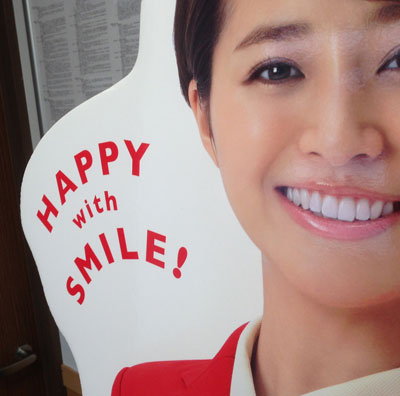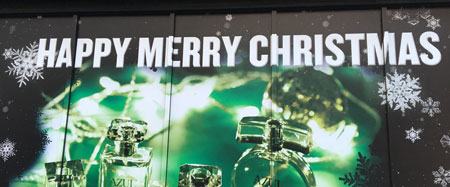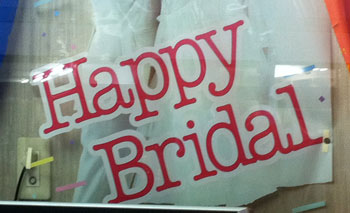
X Happy with smile!
Tim says:
This is a difficult one to correct.
There’s no doubt that it’s strange English. In part it’s simply because “Happy with a smile” would be more grammatically correct.
But even then it doesn’t sound natural. Maybe because, if you’re happy, it’s most likely that you are smiling. So it seems unnecessary to say so.
Also, “Happy with ~” sounds like it means that you are pleased with that thing or person.” For example, “My son did his chores around the house today, so I’m happy with him.” But I don’t think the car rental company who made this sign wants to say that they are pleased with their smiles!
Of course they want to say that their employees are smiling and friendly. So they could use a classic English slogan like:
O Service with a smile
Ayumi says:
Timの言うとおり、どう直したらよいのかがなかなか難しい。
おそらく日本語の感覚では「笑顔でハッピー!」なのでしょう。
だとしたら、Be happy with a smile! だったらどうか?
What do you think, Tim? (Tim says: “It still sounds strange to me!”)
それとも
We’ll make you happy with a smile!
形容詞のhappyがいきなりなのが違和感あり。
それが意味を不明にしている原因の模様。
従業員がハッピーなのか?お客様をハッピーにするのか?両方?
この看板を見ればわかるでしょ?ってことでしょうか^^
田中亜由美は「TOEICテスト クロストレーニング PART 1・2」などの本は販売中!ブログはこちら.
周囲にある英語を見て、果たしてそれが正しい英語なのだろうかと感じる英語はありますか?「あの英語は絶対に間違っている」という英語の表記はありますか?看板の写真を撮って、Machigai.comに送りましょう!とんでもない英語だったら、このコーナーで出します!





